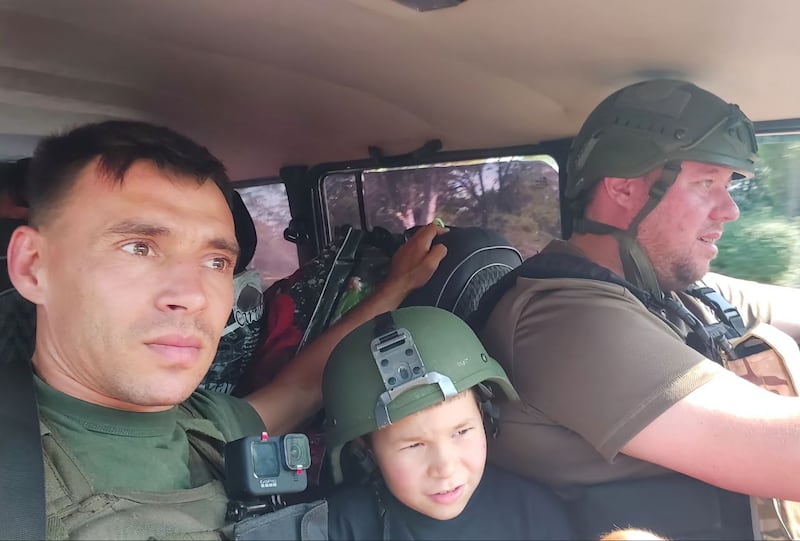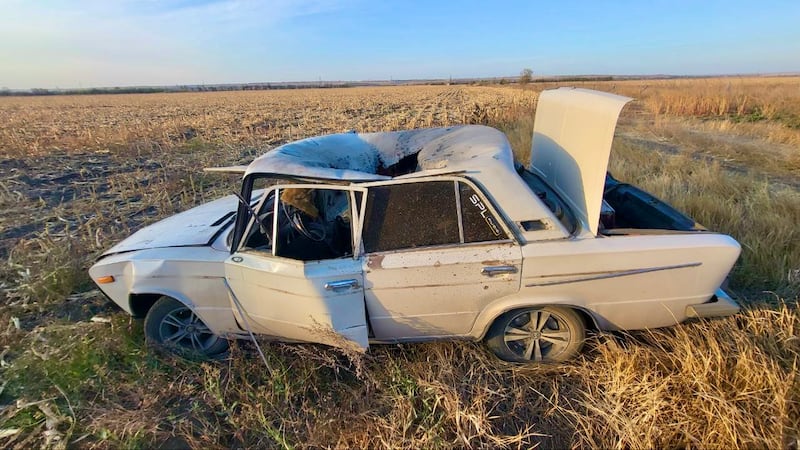The rapid 15km drive on an evacuation mission to the village of Hirnyk in eastern Ukraine had barely begun when a frantic call for help crackled through Vasyl Pipa’s radio.
He swiftly reversed to where the other van on the mission had suddenly stopped in a cloud of smoke, and volunteer Danylo Zakharchenko was already dragging his unconscious colleague, Tigran Galustyan, out from behind the steering wheel and shattered windscreen.
A Russian drone had blasted through the roof of the armoured van above Galustyan’s head. He was quickly loaded into Pipa’s vehicle and rushed to the nearest emergency medical point, but he could not be saved. Galustyan (37), who had taken part in hundreds of evacuation missions, left behind a young daughter.
He fell victim to the kind of drone attack that has transformed the battlefield in eastern Ukraine – and perhaps modern warfare itself – and is now terrorising the tens of thousands of civilians who still live in cities and villages near the front line, as well as emergency workers and volunteers who try to help them.
A Russian unit posted footage of the attack from a so-called first-person-view (FPV) drone – a fast, nimble, bomb-carrying quadcopter probably flown from several kilometres away by a pilot who homed in on the van via live video sent from the drone’s camera.

Such drones can cost only a few hundred euro, have a range of 10km or more and carry shells powerful enough to cripple a tank, never mind the kind of lightly armoured former bank delivery van that Galustyan was driving and many evacuation teams use.
Pipa was driving a similar van as leader of a police evacuation team in the Donetsk region known as the White Angels, and in the back were German journalists reporting on the mission to Hirnyk and their Ukrainian field producer Artem Pribylnov.
“This war has changed. If not for drones it would still be possible to evacuate people relatively safely,” says Pribylnov, who often works near a front line that is creeping westward as Russia’s huge and abundantly armed military grinds forward.
“It would just be bad luck to be hit by a shell or mortar on an evacuation mission. They can’t be accurate enough to intentionally hit a car travelling at 140km/h. Neither can a sniper. But an FPV drone is a very precise weapon,” he says.
“And they can carry very powerful ammunition. The Russians know they could find an armoured vehicle on this road, so the FPV carries anti-tank ammunition to pierce armour.”

It is clear from copious footage posted on social media that Russian drone units often regard all vehicles spotted near the front line – not only clearly marked evacuation vans but also ordinary civilian cars – as targets; a few days after Galustyan’s death, Pipa’s team found an ageing Lada in a roadside field with a similar hole blasted in its roof right above the head of the driver, who was slumped dead behind the wheel.
Drone attacks are now a daily danger to the White Angels and other evacuation teams. Pipa’s van is equipped with a signal jammer, but some drones can switch frequencies automatically to bypass electronic blocking.
Russian drone units scanning almost deserted roads such as those around Hirnyk may attack whatever they find, whether a military vehicle or civilian car, in what Pribylnov calls an attempt to break the Ukrainian army’s supply lines and simultaneously terrorise the district’s remaining residents. Moscow, for its part, accuses Ukraine of employing similar tactics in some border areas of Russia.
In the southeastern Kherson province, meanwhile, Russian drone operators on the occupied eastern bank of the Dnipro river are accused of brazenly “hunting” civilians in the Kyiv-controlled regional capital on the western bank, where more than 60,000 people live.
“Over the last month there were 3,500 drone attacks on Kherson city and other parts of the right bank of the region. More than 100 attacks a day, the vast majority of them on civilians – sometimes on the police or fire service but hardly ever the military,” says Serhiy Nikitenko, chief editor of leading Kherson media outlet Most.
“This summer they intensified their drone attacks, usually using drones that drop explosives ... The Russians published hundreds of videos showing drones pursuing civilians and dropping bombs on pedestrians, on cars, on people riding bicycles. It’s total terror,” he adds.
“About a third of the city is patrolled by these drones, and life on the streets there has almost vanished ... And it has no military purpose. Most of those attacked are older people who can’t run and hide from the drones. People are being killed and injured. It’s depraved.”
Russia occupied Kherson for eight months at the start of its full-scale invasion of Ukraine in 2022, and has continued to pummel it with shells and missiles.
But Nikitenko says the attacks of the drones – which approach almost silently to kill and maim – is particularly terrifying: “It’s bad enough now, while there are still leaves on the trees. But in a month there will be less cover, so it will probably be even worse.”
- Sign up for push alerts and have the best news, analysis and comment delivered directly to your phone
- Find The Irish Times on WhatsApp and stay up to date
- Our In The News podcast is now published daily – Find the latest episode here

















